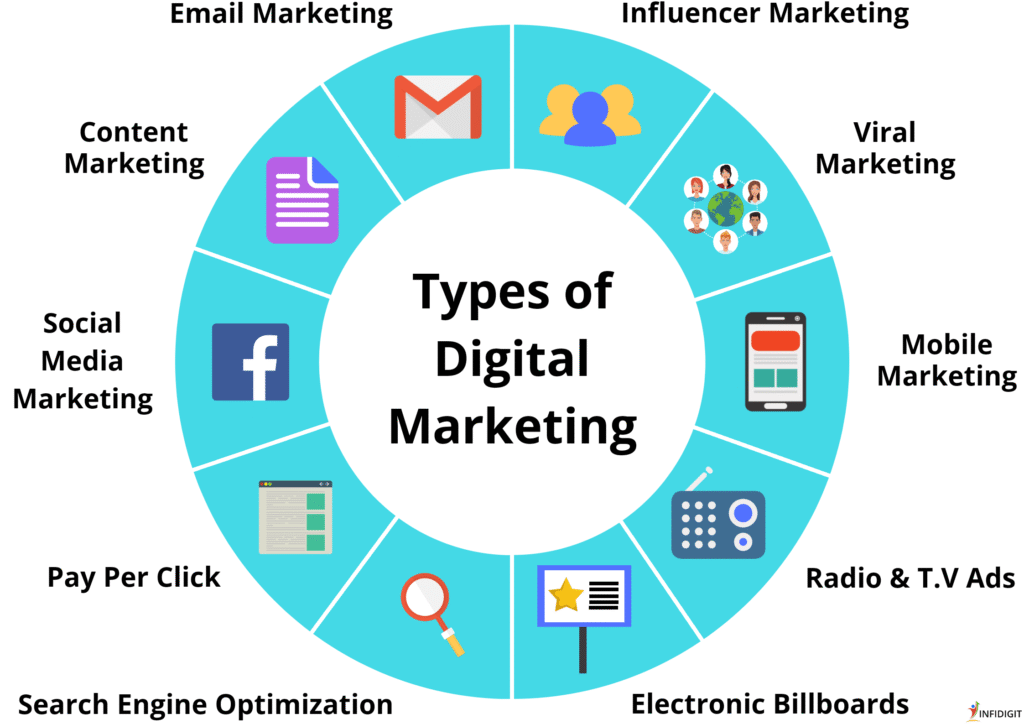

Freelancers face a crowded market (over 1.5 billion worldwidemeetharlow.com), so attracting a steady stream of clients requires strategy. The following guide covers targeted platforms, content marketing, SEO, portfolio building, community engagement, freelance‐marketplace positioning, and performance tracking. It includes actionable tips for local (Hyderabad/India) and international reach, all optimized for organic visibility and conversions.
1. Key Platforms and Profiles
LinkedIn (B2B focus): LinkedIn is a critical network – it “boasts over 930 million users worldwide”meetharlow.com, making it ideal for client outreach. Optimize your LinkedIn profile with a client-focused headline and keywords (e.g. “Digital Marketing Specialist – Hyderabad – SEO, WordPress, Google Ads”)meetharlow.commeetharlow.com. In your summary, tell your story and add a call-to-action (CTA) such as “contact me to discuss your project”meetharlow.com. Connect with Hyderabad and international prospects by sharing valuable posts or articles (e.g. case studies of your WordPress or SEO work). Use LinkedIn SEO: as one guide notes, “optimize your profile for keywords your leads might search for”meetharlow.com.
Facebook & Local Groups: Join and participate in Hyderabad/India business and industry groups (e.g. “Hyderabad Startups”, marketing forums) to network and demonstrate expertise. Regularly answer questions and share helpful tips or mini-case-studies (e.g. how you set up an ecommerce site). Create a professional Facebook Page for your services and post updates or client testimonials. Encourage clients to follow/like your page. Facebook’s group format can generate leads organically by building trust in niche communities.
Local Listings & Google Business: Claim your Google Business Profile (free Google Business listing) for your name or agency. A complete profile (with photos, services, “digital marketing Hyderabad”, hours) dramatically boosts local SEOdatabox.comdatabox.com. Google reports that local businesses rank their GMB listing even higher than social media or content marketing for visibilitydatabox.com. Make sure your Name–Address–Phone (NAP) is consistent on all local directories (Justdial, Sulekha, Yellow Pages, LinkedIn, etc.). Solicit Google reviews from satisfied clients (positive reviews improve your local ranking and trust).
Freelance Networks: Maintain active profiles on Upwork, Fiverr, Freelancer.com, and PeoplePerHour. These marketplaces have global reach and built‐in search. Even as you market yourself elsewhere, these sites can produce steady leads:
Upwork: Fill out 100% of your profile. Use a clear title/overview that specifies your niche (e.g. “WordPress & SEO Expert for Small Businesses”)upwork.com. Highlight relevant skills and past projects. As Upwork advises, clients should “know exactly what to hire you for and what you’re best at”upwork.com. List all 15 skill tags, link a portfolio of sample sites, and obtain client testimonials. Actively apply to jobs but only in your niche – quality proposals are key. Maintaining a high Job Success Score (JSS) with good reviews will push your profile up in search.
Fiverr: Create well-optimized Gigs. Write a concise, keyword-rich title (e.g. “I will develop your WordPress website in 3 days”) and descriptionmedium.com. Use all available search tags. Define clear service packages (Basic/Standard/Premium). Use eye-catching gig images or a short intro video. Focus on one niche – as one freelancer notes, “no one needs a seller who can do a little bit of everything!”medium.com. Deliver outstanding work to quickly gather positive reviews – on Fiverr “your latest review matters a lot”medium.com. Promote your Fiverr link on social media if permitted.
Niche/Global Sites: Consider specialized platforms (LinkedIn ProFinder, Upwork Project Catalog, etc.) and list your services on startup/vendor marketplaces. For Hyderabad leads, list on local business networks or agencies’ partner pages. Ensure every profile/Listing is consistent (use the same photo and name) to build recognitionmedium.com.

2. Content Marketing Strategies
Creating and sharing content establishes authority and drives organic traffic. Mix formats for broad reach:
Blogging: Maintain a professional blog or news section on your website. Write posts on topics like “Top 10 WordPress Tips for Local Businesses” or “Guide to Instagram Ads for Hyderabad Stores.” HubSpot notes that “businesses that blog average 55% more website visitors than those that don’t”offers.hubspot.com, and about 57% of companies acquired a customer via their blogoffers.hubspot.com. Use SEO keywords (both global and local, e.g. “digital marketing Hyderabad”) naturally in titles and content. At the end of each post, include a call-to-action (e.g. “Contact us for a free site audit”) to convert readers. Promote new posts on LinkedIn, Facebook, and relevant online groups.
Instagram Carousels & Visual Posts: For social engagement, use Instagram carousels (slide posts). Hootsuite reports carousels “consistently outperform single-image posts” and receive far higher engagementblog.hootsuite.com. On average, carousel posts get about 154 more interactions than static imagesblog.hootsuite.com. Turn a blog post or case study into a carousel: e.g., a slide-per-key point summary of “My recent SEO project result”. Always craft a strong first slide (hook) to encourage swipingblog.hootsuite.com. Keep branding and a CTA (like “See full case study on our website”) on the last slide. Post these regularly to stay visible in users’ feeds.
Video Content: Video is hugely effective for marketing. A recent survey found 89% of businesses use video marketing and 93% of marketers say it’s crucial to their strategyblog.hubspot.com. Use short videos (under 2–3 minutes) to explain services (e.g. “How I optimize WordPress speed” or “Intro to Google Ads”). Post videos on YouTube, LinkedIn, and even Instagram (Reels/IGTV). Include clear CTAs or annotations in your videos – Wistia reports video with calls-to-action or email capture forms can become “an effective way to generate and nurture qualified leads”blog.hubspot.com. Note that video consumption is soaring (playtime up 44% in 2023blog.hubspot.com), so more clients will see video content.
Other Content: Create sharable graphics (infographics of your service process), eBooks (e.g. “Complete WordPress Checklist”), or case-study PDFs. Publish guest posts on reputable industry blogs to reach new audiences and earn backlinks. Host live Q&A sessions or webinars (e.g. “Ask a Digital Marketer – Free Consultation”) to showcase expertise. Repurpose content across channels: a blog post can be trimmed into LinkedIn articles, carousel slides, and video scripts. Always focus on quality and consistency – a regular schedule (e.g. one blog post + several social posts per week) will steadily build visibility.
3. SEO Techniques (On-Page, Off-Page, Technical)
Off-Page SEO: Build your site’s authority with backlinks and online mentions. Write guest posts on industry sites or local business blogs, including a link back to your site. List your business on directories (as above) and industry-specific listings (e.g. Clutch.co for agencies, if applicable). Share your content on social media and encourage others to link to it. Manage your online reputation: asking happy clients to leave Google/Facebook reviews not only boosts trust but also improves ranking signalssemrush.com (off-page SEO includes “getting other websites to link to your site” and “managing your reviews on external platforms”semrush.com). Participate in relevant forums (e.g. Quora or Reddit’s r/Entrepreneur, r/SmallBusiness) by providing value – include links to your content when helpful.
Optimize your website (service pages and content) so clients find you via search engines, both locally and globally:
On-Page SEO: Include your target keywords (services) in page titles, headings, meta descriptions, and body text. For example, service pages might target phrases like “WordPress developer Hyderabad” or “SEO specialist India”. Use unique title tags and H1 headers for each pagesemrush.com. Ensure content is high-quality and relevant to client intent. Add internal links between related pages (e.g. link from your “Ecommerce Setup” page to your “Product Writing” page) to keep visitors engaged. Optimize images with descriptive ALT text and file names (e.g.
on-page-seo-example.jpg). Use schema markup (LocalBusiness or Service schema) to help search engines understand your offerings.
Local SEO: To capture Hyderabad/India searches, use location keywords on your site and in content (e.g. “Hyderabad digital marketing services”). Ensure your Google Business Profile is fully optimized: choose the correct category, list all service keywords, and post updates or offers there. Google’s experts say a complete Business Profile gives you “better visibility and engagement” in local searchdatabox.com. Use consistent NAP info across all local sites. For local clients, create geo-targeted pages or blog posts (e.g. “SEO Tips for Hyderabad Restaurants”). Encourage local directories and partner sites to link to you. Note: an SEO survey found a GMB listing is often “more important than social media, content marketing, email marketing…” for local business visibilitydatabox.com.
Technical SEO: Ensure your site loads fast and is mobile-responsive (Google uses mobile-first indexing). Compress images and enable caching. Use SSL/HTTPS for security. Create an XML sitemap and robots.txt. Check for crawl errors or broken links in Google Search Console. Fast, well-coded sites rank better and improve conversions (users trust a smooth experience). Optimize for Core Web Vitals (load speed, interactivity). Submit your sitemap to Google Search Console and Bing Webmaster Tools.
Keyword Strategy: Do thorough keyword research for each service. Use tools like Google Keyword Planner or Ahrefs to find terms people search for (e.g. “Wordpress developer India” vs “Wordpress dev freelance”). Include long-tail keywords (e.g. “ecommerce shopify setup remote”). Track rankings regularly. In summary, balance a strong on-page foundation with off-page outreach: SEMrush advises that “on-page SEO makes your content better for users and search engines”semrush.com, while off-page (links, mentions, reviews) “improves your website’s reputation”semrush.com. Both are needed to rank highly.
4. Portfolio and Credibility
A compelling portfolio builds trust and converts visitors into clients:
Highlight Skills and Background: Clearly list your relevant skills, tools, certifications (e.g. Google Ads, HubSpot content) and education. A guide reminds freelancers that businesses also look for soft skills: communication, punctuality, etc. Mention qualities that set you apart (e.g. “dedicated to clear communication and on-time delivery”)flux-academy.com. Show logos of companies you’ve worked with or certifications you hold.
Social Proof (Testimonials & Case Studies): Sprinkle client testimonials throughout your portfolio, website, and profiles. As one freelancing guide notes, “social indicators of trust are the most important portfolio items”: include written quotes, video testimonials, or mini case studiesflux-academy.com. Even a short quote like “[Name] was fantastic – our traffic doubled!” with attribution (company and role) adds credibility. If new to freelancing, consider doing a small project for a friend/family and get a testimonial. Display logos or blurbs of clients on your site and LinkedIn.
Showcase Best Work: Present 3–5 of your strongest projects (even personal or pro-bono). For each project, briefly describe the client’s problem, your solution, and the results achievedflux-academy.com. For example: “Client: Local bakery. Problem: No online presence. Solution: Built WooCommerce site, SEO-optimized, integrated Insta. Result: 30% increase in orders in 2 months.” This story format proves you understand clients’ needs.
Call-to-Action: At the end of your portfolio or case studies, always include a CTA: “Contact me for a free consultation” or a link to your contact page. Ensure your contact info is prominent. Remember, your LinkedIn and social profiles should direct people to your portfolio; as one source advises, your social media “should be driving traffic to your portfolio”medium.com.
Regular Updates: Keep your portfolio current. Add new projects or stats as you complete them. Remove outdated content (an overfull portfolio can be overwhelming). An up-to-date portfolio coupled with active LinkedIn/Facebook profiles presents a professional brand that builds confidence.
5. Community Engagement & Referrals
Building relationships can lead to a steady referral pipeline:
Networking: Engage in online and offline communities. Participate in LinkedIn or Facebook groups for small businesses, Hyderabad entrepreneurs, or digital marketing (e.g. “Digital Marketing India” group). Share tips and case studies there (without hard-selling). Join Hyderabad startup meetups or Chambers of Commerce events to meet local business owners. Offer to give a free workshop or webinar (e.g. “Intro to Google Ads”) for community organizations – this demonstrates expertise and can yield client leads.
Personal Branding: Publish helpful content regularly on social media and your blog. Over time, people will come to see you as an authority. Comment thoughtfully on industry blogs or answer questions on forums like Quora. When you consistently provide value, peers and prospects remember your name.
Referral Programs: Don’t underestimate word-of-mouth. Politely ask satisfied clients for referrals: “If you know anyone who could use these services, feel free to pass along my info.” You can offer a small referral incentive or discount if appropriate. According to marketing studies, referral leads convert at much higher rates because of built-in trust. Encourage clients to share their positive experience (e.g. on Facebook or LinkedIn), since a testimonial from a friend is very persuasive.
Partnerships: Form alliances with complementary professionals. For example, partner with a local web designer or photographer – you can refer clients to each other. Join freelance networks or co-working spaces where you can trade referrals with others in related fields.
Engagement Tools: Use email newsletters to keep in touch with past clients and subscribers. Share your latest portfolio pieces, tips, or special offers. A monthly newsletter can remind people of your services. Likewise, maintain an active Google Business profile by posting updates (offers or behind-the-scenes photos); Google says regularly posting on GMB can improve your local visibility.
Conclusion
By combining targeted platform outreach, rich content, solid SEO, and active networking, a freelance digital marketer can build a sustainable flow of leads. Optimize each approach: use keyword-rich profiles and CTAs to boost visibility, create engaging content (blogs, carousels, videos) to attract audiencesoffers.hubspot.comblog.hootsuite.com, and leverage community referrals to seal deals. Continually refine tactics with data from analyticslinkedin.comlinkedin.com. Over time, this multi-pronged strategy will maximize organic reach and conversion rates across local (Hyderabad), national, and international markets.
.
